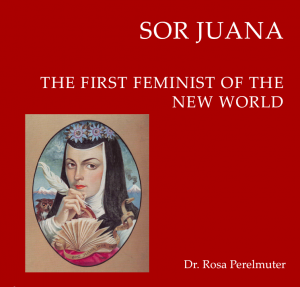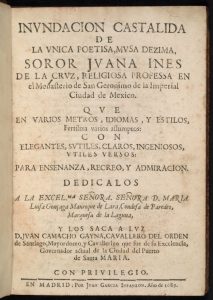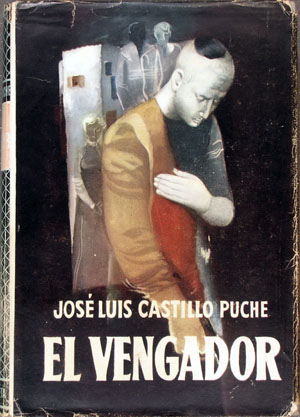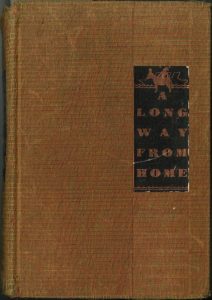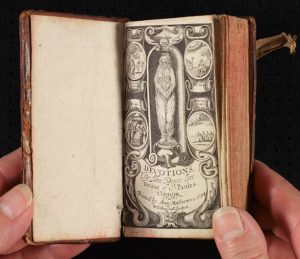Halloween has passed. At the Rare Book Collection, however, ghostly apparitions continue to haunt our days.

Among the spectral appearances is this P. T. Barnum show bill from exactly 150 years ago today, announcing “The Ghost,” a performance at the famous American impresario’s museum. The ephemeral printing for November 16, 1863, was in Wilson Library’s Conservation Lab receiving treatment for display in the upcoming Rooms of Wonder exhibition. While most materials in that show will come from the collection of alumna/curator Florence Fearrington, the RBC will supply a few choice items such as this one, which testifies to the commercialization of the cabinet of curiosities concept in the mid-1800s. (A giant boy and giant girl are among the museum’s other attractions for the day.)
The nineteenth century was an era of scientific progress. It was also one that had a strong fascination with the supernatural. A recent donation to the RBC from Dr. Charles T. White, a volume of spiritualist writings, underscores this interest in the uncanny and suggests how spiritual doings were viewed as phenomena open to scientific inquiry. Inside this book, which has the spine title “Celestial Gems,” are a selection of texts and a detailed manuscript index.
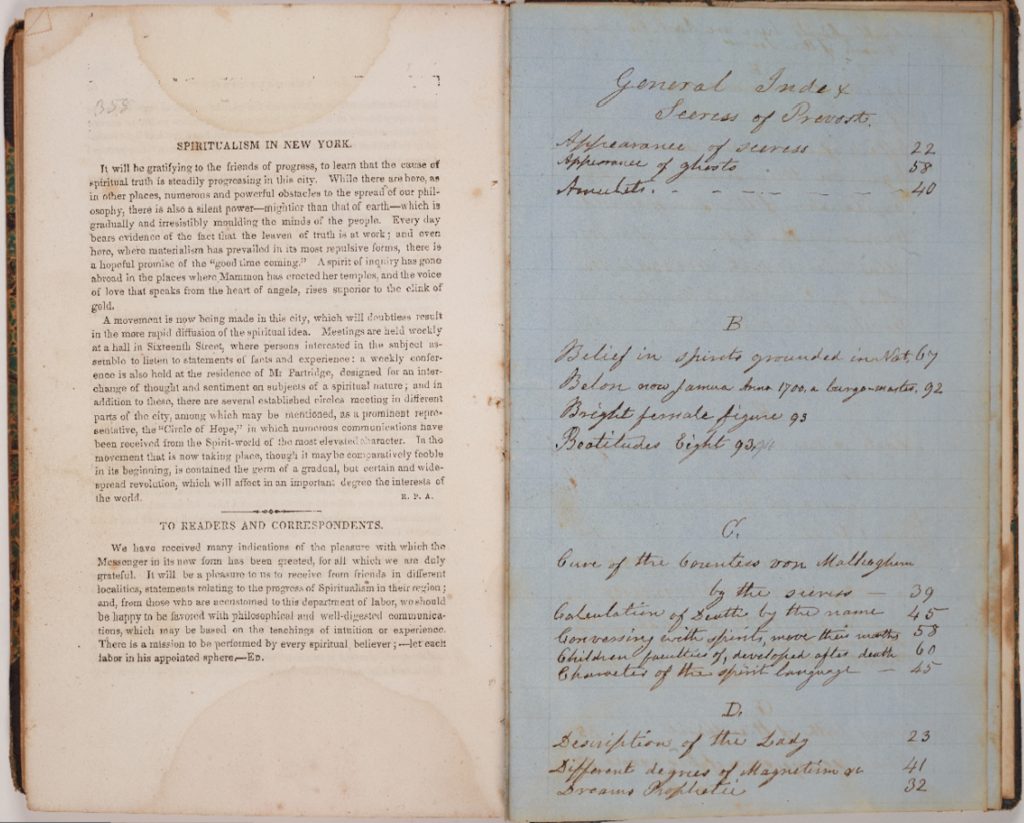
The “General Index” begins with an alphabetical listing of the subjects and events in The Seeress of Prevorst, Being Revelations Concerning the Inner-life of Man, and the Inter-Diffusion of a World of Spirits in the One We Inhabit (New York: Harper & Brothers, 1845). This first work in the volume is an English translation of Justinus Kerner’s famous account of Friederike Hauffe, a sleepwalking clairovyant in a small town in Baden-Württenburg, Germany. Kerner was a poet and physician who came to know the woman.
Following Kerner’s classic work is Elements of Spiritual Philosophy; Being an Exposition of Interior Principles. Written by Spirits of the Sixth Circle. R.P. Ambler, Medium. The author of this rare 1852 Springfield, Massachusetts, imprint was a Universalist minister who claimed the power to speak for spirits, hence his self-identification as a “medium” on the title page. He briefly published a journal, The Spirit Messenger, issues of which are also present in “Celestial Gems.” For Ambler, communication with spirits was a new stage in religion and represented a release from traditional superstition, contrary to what we might think today.

 The pages of this book have evidence of past owners and readers beyond the index. Most evocative are the items laid in. The unsettling albumen print above suggests a woman in a trance state, although lengthy photographic exposure times could necessitate an eerily frozen countenance. The “ADMIT BEARER” ticket found at another page might have permitted entrance to a staged mediumship séance, such as were not uncommon in the period.
The pages of this book have evidence of past owners and readers beyond the index. Most evocative are the items laid in. The unsettling albumen print above suggests a woman in a trance state, although lengthy photographic exposure times could necessitate an eerily frozen countenance. The “ADMIT BEARER” ticket found at another page might have permitted entrance to a staged mediumship séance, such as were not uncommon in the period.
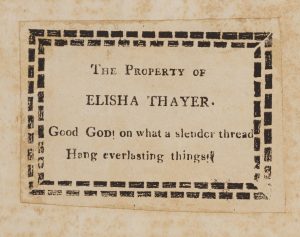 One Elisha Thayer’s book label appears twice in the volume, although we can make no claims for his leaving these relics behind.
One Elisha Thayer’s book label appears twice in the volume, although we can make no claims for his leaving these relics behind.
“Celestial Gems” is a particularly compelling and ironic example of the book as material object–a physical manifestation of an earlier era’s encounter with the immaterial world.

